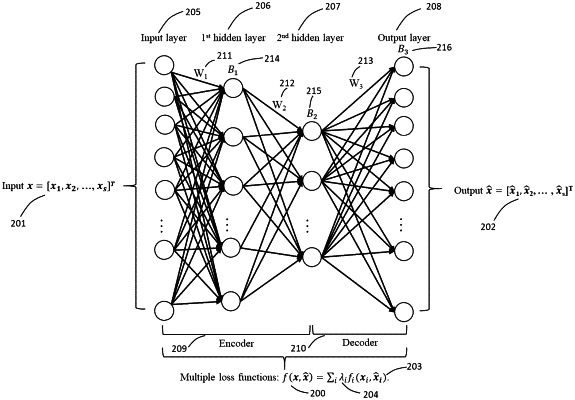| CPC G05B 23/0283 (2013.01) [G05B 19/4184 (2013.01); G06F 18/2148 (2023.01); G06N 3/049 (2013.01); G05B 23/0221 (2013.01)] | 12 Claims |

|
1. A computer-implemented pre-processed time-delay autoencoder based anomaly detection method for detecting anomalous states of machines arranged in a factory automation (FA) system or a manufacturing production line, comprising steps of:
acquiring source signals from the machines via an interface;
performing a data pre-processing process for the acquired source signals by normalizing value ranges of the acquired source signals and filtering undesired features from the acquired source signals;
performing a time-delayed data reform process for the pre-processed source signals based on a time-delay window to generate pre-processed time-delay data;
submitting pre-processed time-delay testing data to a pre-processed time-delayed autoencoder (Prep-TDAE) neural network, wherein the pre-processed time-delay testing data are collected online while the machines are operated, wherein the Prep-TDAE neural network has been pre-trained by using a pre-processed time-delay training data;
detecting, if an anomaly state is encountered with respect to the machines, by computing anomaly scores of the pre-processed time-delay testing data; and
determining, when the anomaly state is detected, anomaly occurrence time, duration and severity with respect to the anomaly state of each of the machines.
|